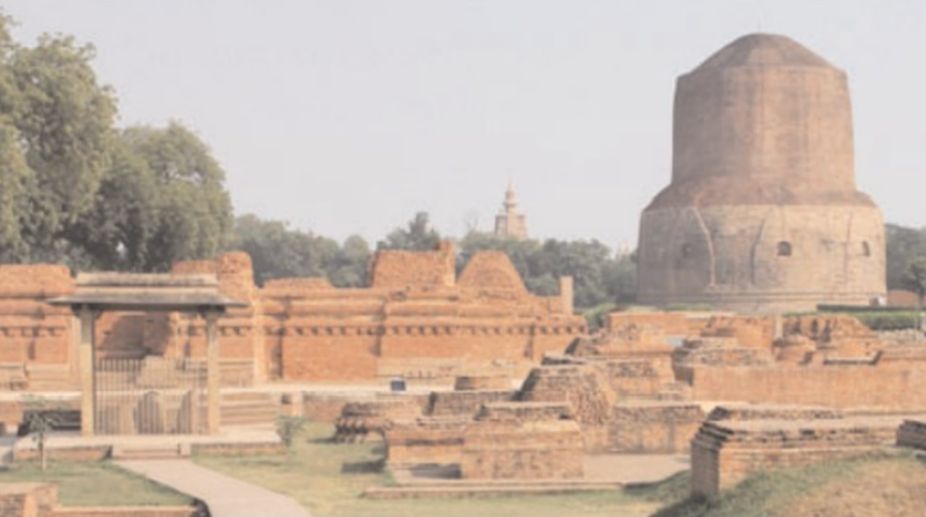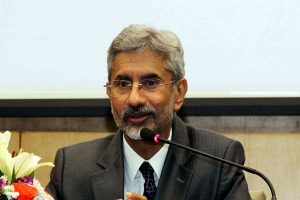India has been a tourist destination from earliest times, in those days for religious purposes. Chinese pilgrims Faxien in the fourth century and Xuanzang and Yijing in the seventh century came to India in search of the footsteps of Lord Buddha and their accounts are invaluable source material for historians of that epoch. India could again be a great religious tourism destination, for all the world’s great religions have traditions here; Christianity, for example, thrived in India even before it was established in Europe.
India entertains about nine million tourists a year; twenty years ago it was only two million. But this increase fades into insignificance when compared to France’s 76 million, Spain’s 55, the USA’s 49, Italy’s 48 and China’s 46. China’s figure is remarkable because its tourism industry was practically nonexistent until the 1990s. Of our 9 million, this figure is inclusive of Indian-origin tourists from abroad who return to their homeland repeatedly. It would be interesting to disaggregate the Indian-origin tourists from others, but this figure is not available. Tamil Nadu, Maharashtra and Uttar Pradesh are the most visited states, and Delhi, Mumbai, Chennai, Agra and Jaipur the most visited towns.
Advertisement
The Indian authorities once realised the importance of tourism, and Dr Karan Singh was the first-ever Minister of Tourism from 1967 to 1973. He was the most distinguished and knowledgeable person to have held this post, which has been progressively reduced in status. The External Affairs Ministry has given ‘Visa on Arrival’ facilities for 43 countries, but the queue for this option at our immigration counters is longer and slower than for those arriving with visas, so this is another case of good intentions frustrated by bad implementation. The ‘Incredible India’ campaign was appreciated worldwide, but has ceased to exist. Air India promoted tourism in its early days; some older readers may recall a free booklet on board titled ‘Foolishly Yours’ by Bobby Kooka. There no such book now; we have lost both our sense of humour and proportion. The External Affairs Ministry helped in promoting tourism around our 50th independence anniversary and again this year for our 70th anniversary, and organized Festivals of India abroad, starting in the 1980s in the USA, and then on to France, Canada, Russia, Germany, Britain and other countries. One US author wrote: “The collective effort of so many cultural products left the American elite impressed, and our media woke up to the fact that there is art everywhere in India.”
The Tourism ministry has 14 overseas offices which organize road-shows and participate in Travel Trade Fairs, but these offices are heavy with bureaucracy. Sometimes they are merged with other government departments like the India Investment Centre, Tea Board, or Air India, which is a false saving. No state in India has its tourism office abroad, unlike the provinces of Canada and Australia.
China has one hundred million outgoing tourists each year. Only 150,000 of these come to India, and it is important to analyse why. China Eastern Airways has daily flights from China to Kolkata that are usually fully booked. But how many come as tourists? Indian travel agents need to market combined tours of South Asian and South-east Asian countries. More special tourist trains are required; it is not clear why the Palace on Wheels shut down. The Darjeeling Railway was never exploited properly, and a ‘toy train’ from Coimbatore to Conoor is also unutilized. Steam locomotives have their own fascination abroad, rather like vintage cars.
West Bengal, the only state that goes from the sea to the mountains, from the Sundarbans to Darjeeling and Kanchenjunga, is tailor-made for tourism as a major occupation. With British Raj buildings, tea plantations, Sepoy Mutiny sites like Barrackpore and Dum Dum, the legacies of Tagore, Gangetic towns like Serampore and Chandernagore with Baptist, French and Danish connections, this state has enormous tourist potential. In the USA and Europe every major battlefield is a tourist attraction, but at Plassey there are no facilities, no signage, no diorama and no guides; a pathetic monument seems to have been erected by private enterprise. Clive’s house in Dum Dum could also be a huge attraction, but nothing is done to restore it. Religio-cultural sites like Gaur, Murshidabad, Bishnupur, Nabadwip and Armenian and Jewish sites have their own significance. The Asiatic Society, the Botanical Gardens and the Indian Museum are some of the oldest in the world, but everything associated with the government is shabby and in a neglected state. Calcutta is the place whence the Indian diaspora started as indentured labour sailing to the West Indies, Mauritius and Fiji, but these sites are hard to find and in lamentable condition.
Most foreign well-off tourists are in the senior-age category, but there are no accessible toilets, no drinking water and no handicapped-friendly facilities even in the Victoria Memorial. The reality is that in this state, tourism gets zero priority despite the potential for employment, infrastructure, education and hard currency earnings; what the Chinese would term a win-win situation.
Other countries make much out of little; we manage to make little out of much. Our potential is hardly touched at all. Mantova in central Italy has just two places of interest ~ a Duke’s palace and his country estate dating to the 15th century. There is no airport and no seaport, but hundreds of thousands of visitors every year pour in by train and bus. Every small city in Europe has an official tourist office that offers services free of charge. In India there are none.
Ahmedabad was the first Indian city to get the UNESCO heritage city tag, and states like Goa, Kerala and Gujarat fare better in tourism but our states seem unable and unwilling to learn from each other. Other countries parade their ancient sites; India has Nalanda, the Meenakshi Temple, Sarnath, Bodh Gaya, the Asoka Pillars, the Indus Valley sites and a host of others, just one of which would be a focus of tourist interest in another country.
We succeed in conveying the worst possible impression. A party of 15 British schoolchildren carrying gifts of toys for an Indian school was recently denied entry and sent back from Chennai airport. Reports of assaults and harassment of women in hotels, taxis and public places do not remain unknown to the outside world. India’s present tourism minister has warned that foreign women should not wear skirts or walk alone at night “for their own safety… They should click the photo of the vehicle numberplate whenever they travel and send it to friends.” This may be well-meaning, but reveals a patriarchal medieval mindset that is completely counter-productive.
The year by which India is supposed to be transformed is 2022, but no improvement is expected in the Indian indifference to the merits of tourism.











